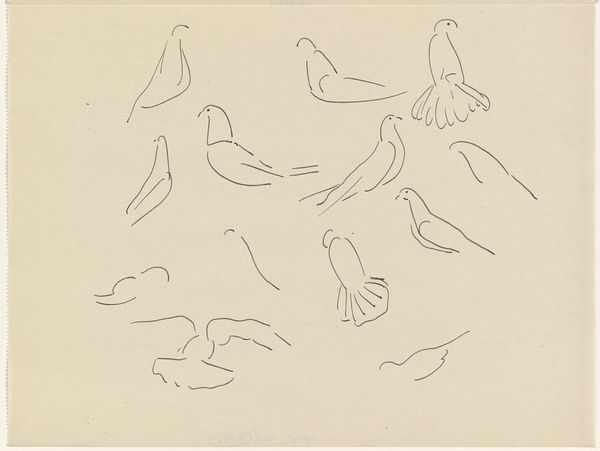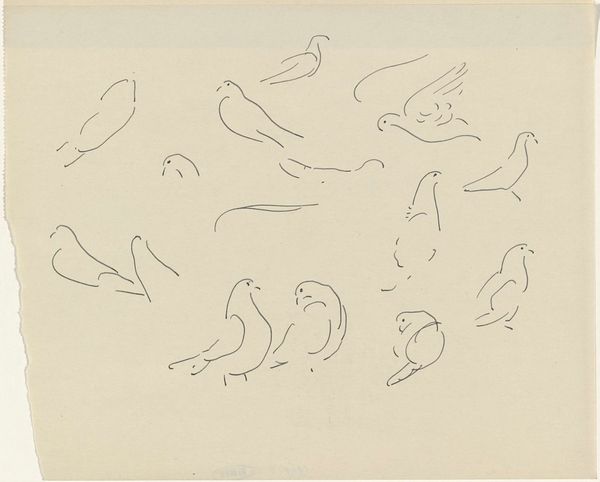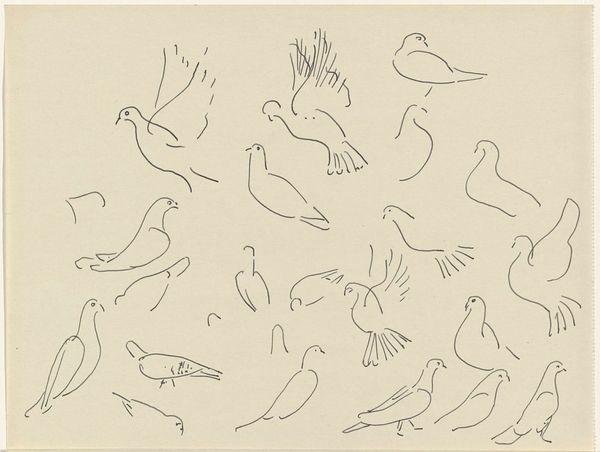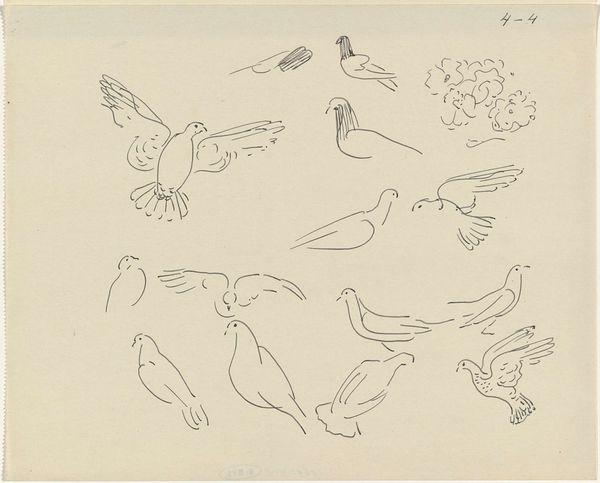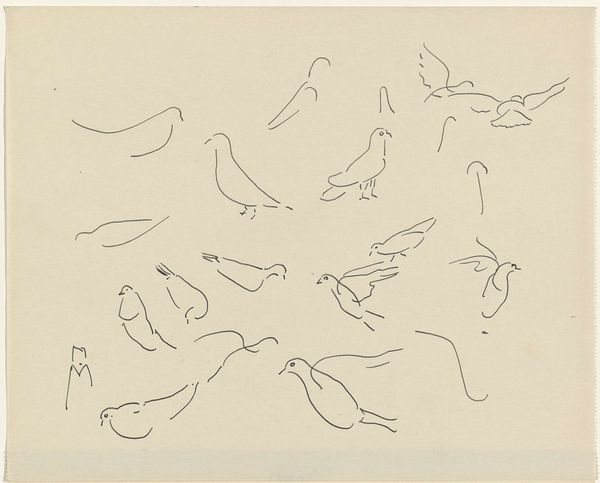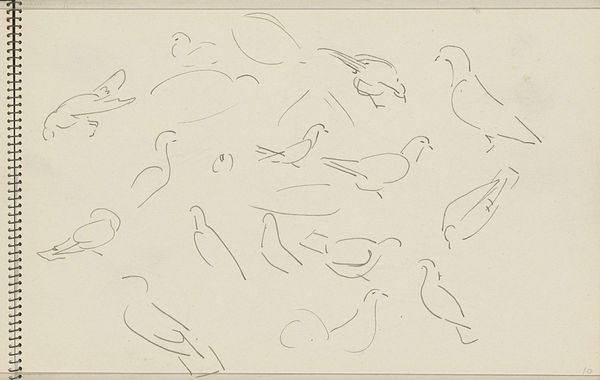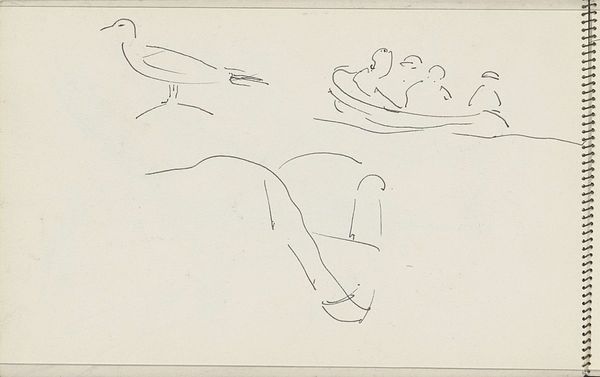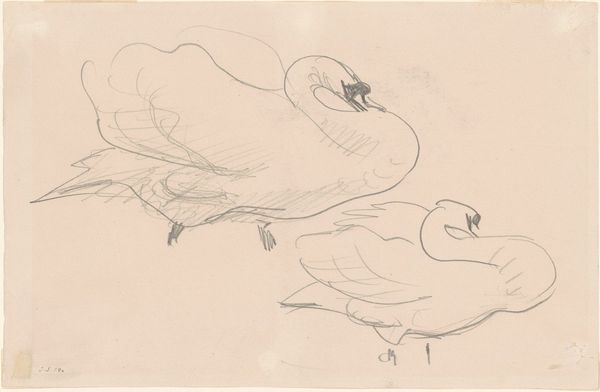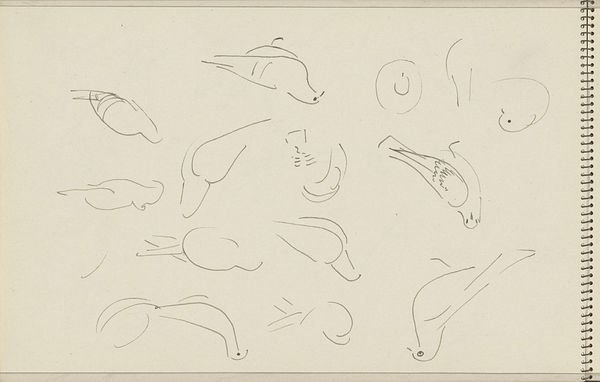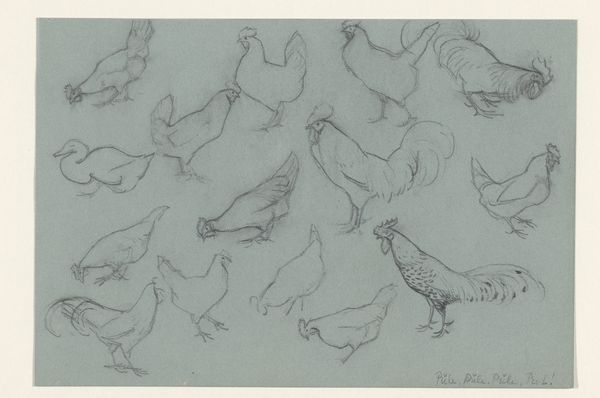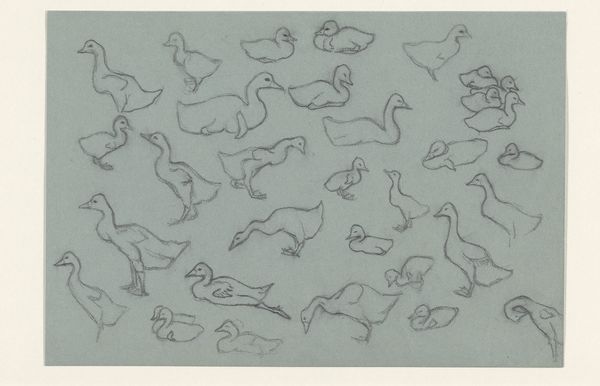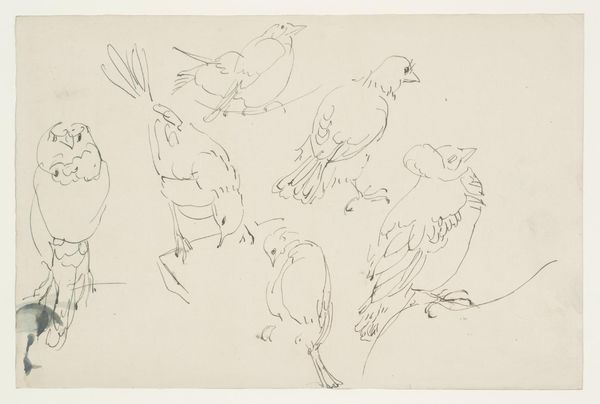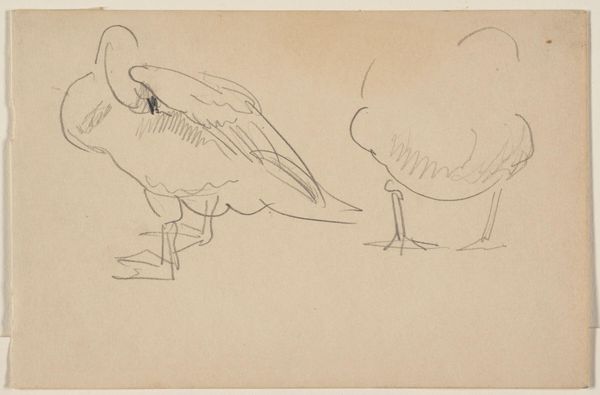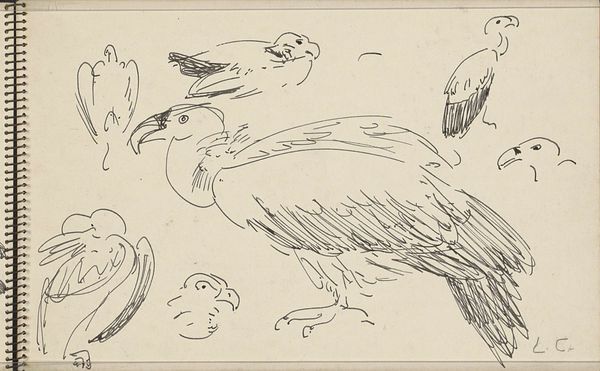
drawing, paper, ink
#
drawing
#
pen sketch
#
figuration
#
paper
#
ink
#
pen-ink sketch
#
line
#
sketchbook drawing
Dimensions: height 214 mm, width 265 mm
Copyright: Rijks Museum: Open Domain
Curator: Here we have Carel Adolph Lion Cachet's "Studies van duiven," created sometime between 1874 and 1945. It's a pen and ink drawing on paper. Editor: My immediate impression is one of serene simplicity. The minimalist lines evoke a sense of quiet observation, like capturing fleeting moments of these birds’ lives. Curator: Exactly. It's crucial to consider the materials – simple pen and ink – and how they facilitate a direct connection to the subject. Cachet’s choice reflects a conscious decision to strip away embellishment and focus on the essence of form, perhaps indicative of a period grappling with industrialization and a turn to more authentic modes of expression. Editor: I see that, and I can't help but view doves through the historical lens of peace and fragility, but also as deeply rooted symbols of social inequality, frequently exploited for religious or political messaging by those in power. The sparseness reminds me that resources and representations are not distributed equally. How might the artist's own socio-political context influenced this depiction? Curator: Cachet, active during a period of immense social change, likely encountered evolving methods for mass communication, and the shifting relationship between humans and animals. The rapid proliferation of inexpensive paper meant that these studies would be readily accessible, furthering accessibility of ornithological or biological understanding by the wider public. Editor: It is interesting to reflect on how his choice of subject might also mirror back at us contemporary notions of identity, gender, and race. Do these birds exist equally, or are there dynamics of hierarchy expressed even in the simplicity of the study? It’s not enough to just observe their form but think about how they engage with larger social structures. Curator: A point well taken. Focusing on his methodology helps contextualize a potentially overlooked drawing in terms of art availability and democratized knowledge of ornithology, and the labor behind producing and distributing affordable art. Editor: So we find ourselves navigating not just artistic vision, but understanding that representation of seemingly harmless creatures, such as doves, reflect bigger struggles in power and access that persist today. Curator: Absolutely. It encourages us to investigate the materials and means behind not just creation but accessibility and reception. Editor: It’s a stark reminder that these ‘studies’ can provide lenses for studying society itself.
Comments
No comments
Be the first to comment and join the conversation on the ultimate creative platform.
